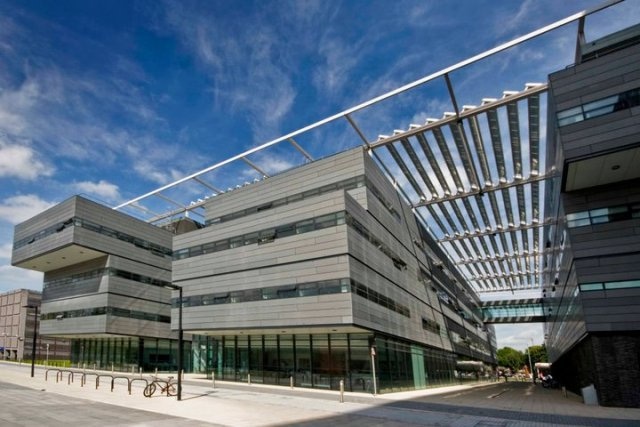May 25 2016
Scientists have developed a table-top gadget that can carry out measurements that were only previously possible with huge machines at a few major labs across the globe. The study, which also included a group from The University of Manchester, implies that research into the development of advanced electronic devices using 2D materials can currently be done at any research university.
 Alan-turing-building (Credit: The University of Manchester)
Alan-turing-building (Credit: The University of Manchester)
Since the 1950s, experiments performed with magnetic fields have played a key role in the advancement of semiconductors devices like light-emitting diodes (LEDs) and transistors that have redefined the world. Earlier, researchers have had to visit massive facilities like the National High Magnetic Field Laboratory in the USA to investigate the basic material structure to comprehend in a better way and control their properties, but such facilities are very rare, and researchers have to compete with others for precious time on the machines.
Dr Darren Graham and a research group from the University of Manchester’s Photon Science Institute have teamed up with co-workers from the University of Cambridge and industry partners from Germany to form the new device. While the novel magnet is compact enough for a table-top instrument, it can only produce a field in small pulses, with each lasting for just one hundredth of a second.
The group worked with scientists from manufacturers Laser Quantum to include lasers into the recent instrument which are over 10 times faster than those found in classic ultrafast laser systems. This permitted the researchers to raise the number of measurements for the duration of one magnetic pulse to approximately 100 - earlier experiments with a comparable magnet system were restricted to 4 measurements per pulse.
The challenge when using these pulsed magnets is being able to record your data within the brief time period that the magnet is on. The breakthrough we have made is in the measurement technique, which is the leap forward that will now enable routine cyclotron resonance measurements on a table-top in a laboratory environment.
Ben Spencer, Post-Doctoral Research Associate, Photon Science Institute, University of Manchester
Eventually, the group believes that the novel system can assist in fast progress in many development aspects of semiconductor devices. The instrument can be effortlessly transferred to different universities, making it simple to assume a measurement and executing it the next day, without any need to apply for time at a nationalized magnet facility, say the scientists.
We’re sure that when people realize that we can do such measurements in the lab they will be lining up to use our instrument. We’ve already been contacted by several groups interested in having measurements made on their samples.
Dr Darren Graham, Photon Science Institute, University of Manchester
The scientists have explained their work in the Applied Physics Letters journal, from AIP Publishing.